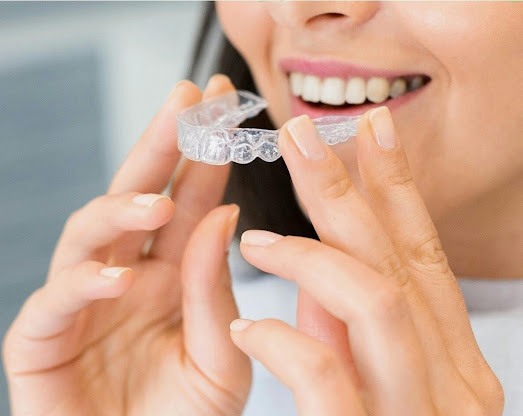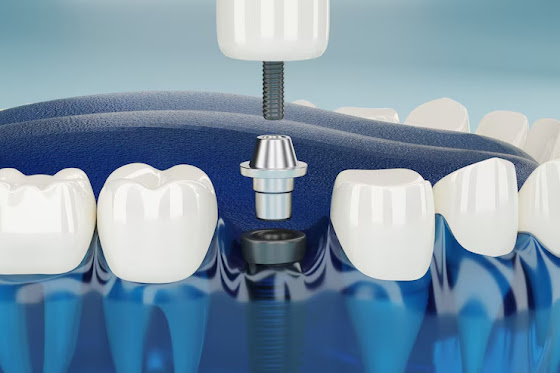Your smile is one of the first things people notice about you. A bright, symmetrical smile can instantly boost your confidence and make a lasting impression. That’s where cosmetic dentistry comes in. Unlike general dentistry, which focuses on oral health and functionality, cosmetic dentistry is about enhancing the appearance of your teeth and gums to give you the smile you’ve always wanted.
Whether you’re dealing with discoloration, chips, gaps, or misalignment, there’s likely a cosmetic dental procedure designed to solve the problem. In this blog, we’ll explore the top seven cosmetic dentistry procedures that can completely transform your look.
Teeth Whitening
Teeth whitening is one of the most common and affordable cosmetic dental procedures. Over time, coffee, tea, red wine, and even certain medications can stain your teeth. Professional whitening treatments performed by a dentist can lift these stains and lighten teeth several shades in just one visit.
Unlike over-the-counter kits, professional whitening uses stronger bleaching agents under expert supervision, ensuring more even results and minimizing sensitivity. If you’re looking for a quick way to refresh your smile for a wedding, job interview, or special event, teeth whitening is an ideal choice.
Dental Veneers
Veneers are ultra-thin, custom-made shells—usually made of porcelain—that cover the front surface of your teeth. They’re a favorite among celebrities because they can completely transform a smile in just two or three visits.
Veneers can correct a range of cosmetic issues, including discoloration, chips, uneven sizes, gaps, and even slightly crooked teeth. Because they’re custom-designed, veneers give you a natural, flawless look that lasts for years with proper care.
Dental Bonding
Dental bonding is a simple yet effective way to fix small imperfections such as chips, cracks, or gaps. In this procedure, a tooth-colored composite resin is applied to the tooth, shaped, and then hardened with a special light.
Bonding is more affordable than veneers and usually completed in one visit. It’s perfect for minor touch-ups or for people who want an immediate improvement without committing to a more invasive procedure.
Invisalign (Clear Aligners)
For those who want straighter teeth without the discomfort and appearance of traditional braces, Invisalign or other clear aligners are a game-changer. These transparent, removable trays gradually shift your teeth into the correct position.
Because the aligners are virtually invisible and can be removed for eating and cleaning, they’re popular with adults and professionals. Treatment time varies depending on your needs, but results can often be seen in a matter of months.
Dental Implants
Missing teeth don’t just affect your smile—they can also change your facial structure and lead to bone loss in the jaw over time. Dental implants offer a permanent solution. A titanium post is surgically placed into the jawbone, acting as an artificial root, and then topped with a natural-looking crown.
Implants look, feel, and function just like real teeth. They’re also extremely durable, often lasting a lifetime with good oral hygiene. Replacing missing teeth can dramatically improve both your appearance and your confidence.
Gum Contouring
Sometimes it’s not your teeth but your gums that affect your smile. If you have a “gummy” smile or uneven gum lines, gum contouring (also called gum reshaping) can help. This procedure involves removing or reshaping excess gum tissue to create a more balanced, attractive smile.
Advances in laser technology have made gum contouring quicker and more comfortable than ever. The result is a cleaner, more proportional gum line that frames your teeth beautifully.
Dental Crowns
Dental crowns, also known as “caps,” are placed over damaged or severely discolored teeth to restore their shape, size, and strength. Unlike veneers, which cover only the front surface, crowns encase the entire tooth.
They’re ideal for teeth that are too weak for fillings or have undergone root canal treatment. Modern crowns are made from tooth-colored ceramic or porcelain, blending seamlessly with your natural teeth. Not only do crowns improve your smile, but they also protect the underlying tooth from further damage.
Benefits Beyond Aesthetics
While these procedures focus on appearance, they often improve oral health too. Straighter teeth are easier to clean, crowns protect weakened teeth, and implants preserve jawbone density. Cosmetic dentistry can be a worthwhile investment in both your smile and your overall health.
Choosing the Right Procedure for You
With so many options available, it’s essential to consult with a qualified cosmetic dentist. They’ll evaluate your teeth, gums, and bite, then recommend a personalized treatment plan. Some people may benefit from just one procedure, while others might choose a combination for a full smile makeover.
During your consultation, don’t hesitate to ask about the dentist’s experience, before-and-after photos of past patients, and details on recovery time, cost, and maintenance.
Final Thoughts
Your smile is more than just a set of teeth—it’s an important part of your personality and self-image. Thanks to modern cosmetic dentistry, achieving the smile of your dreams is easier and more accessible than ever. Whether you want whiter teeth, a straighter smile, or a complete transformation, these seven procedures can dramatically improve both your appearance and your confidence.
Investing in your smile isn’t vanity; it’s self-care. A brighter, healthier smile can open doors socially and professionally, making you feel as good as you look.
For More Click Here:- https://www.tripadvisor.com/Profile/pinncaledental












